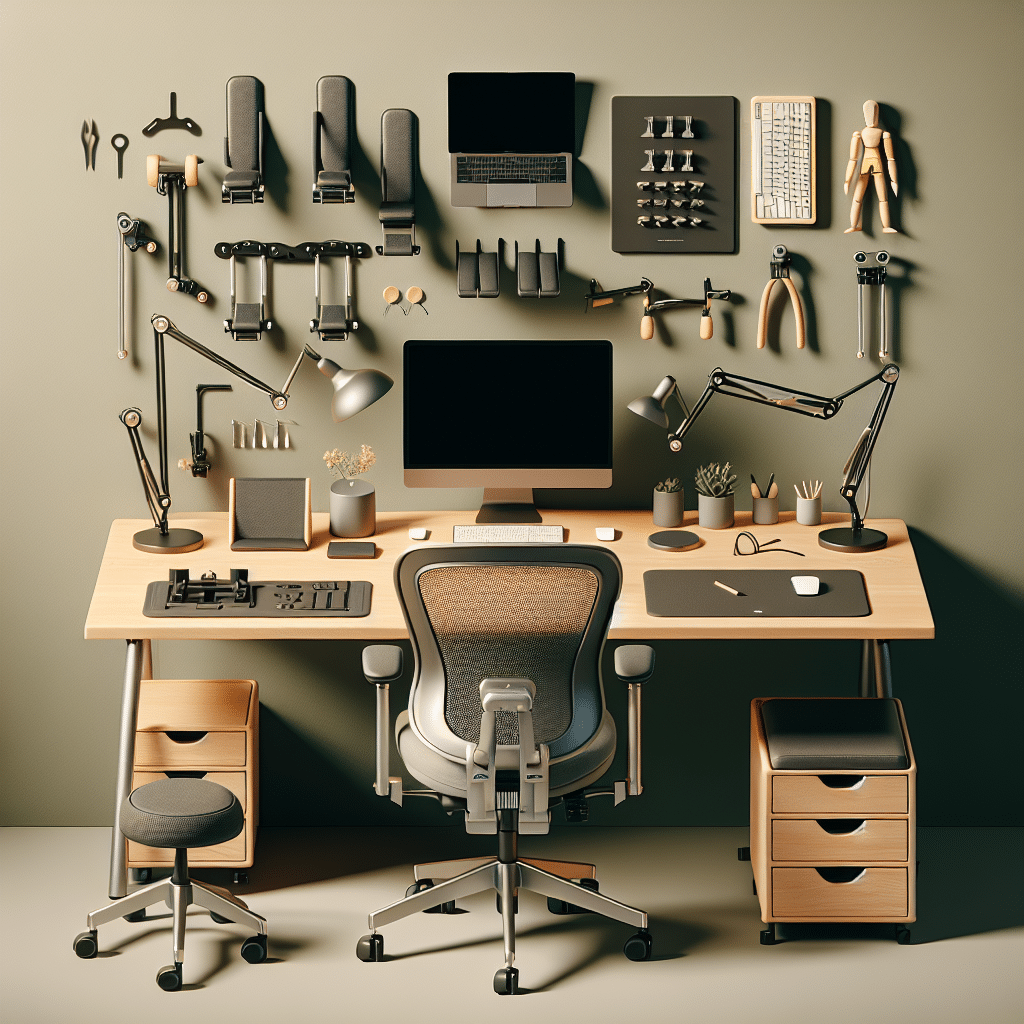Smart Small Desk Setups: Elevating Your Workspace with Ergonomic Tools
For many, the desk setup is more than just a convenience; it embodies productivity, creativity, and well-being. In today’s fast-paced environment, optimizing a small desk setup with ergonomic tools is crucial for maintaining comfort and enhancing focus. This article details various strategies for curating an efficient workspace within limited dimensions, emphasizing smart solutions that cater to both health and productivity.
1. Desk Selection
Choosing the right desk is foundational to creating an ergonomic workspace. Look for compact desks that offer adjustable heights. Desks with adjustable features allow users to alternate between sitting and standing, which promotes better posture and reduces the risk of sedentary-related health issues. A desk height of 28-30 inches is generally optimal for sitting, while a standing height of 38-42 inches works well for most users.
2. Chair Choice
An ergonomic office chair is vital. Small desks often limit chair selection, but it’s crucial to choose a chair that supports your posture. Look for features like adjustable seat height, lumbar support, and breathable fabric. A chair with a 360-degree swivel function allows greater mobility without straining your back or neck. Additionally, opting for a design that complements your small desk can maintain a neat aesthetic.
3. Monitor Mounts and Stands
Proper monitor positioning is essential for reducing eye and neck strain. A monitor mount or stand enables users to adjust the monitor to eye level, encouraging good posture. If space allows, consider dual monitor setups, which can increase productivity. Mounts can free up desk space, making room for other tools while ensuring that screens are easily viewable.
4. Laptop Stands
For laptop users, investing in an ergonomic laptop stand is essential. These stands lift the screen to eye level while the keyboard remains at a comfortable typing height. Some models come with adjustable angles, allowing users to customize their viewing experience. This dual-layer setup helps in maintaining a neutral wrist position and prevents discomfort during extended use.
5. Keyboard and Mouse
Choosing the right keyboard and mouse can significantly impact comfort. An ergonomic keyboard is designed to reduce strain on your wrists, featuring a split or curved design. Coupled with an optical or trackball mouse, which promotes a natural hand position, these tools enhance the overall ergonomic quality of a workspace. Ensure that the mouse is within easy reach to minimize shoulder strain.
6. Desk Organization Solutions
A clutter-free desk enhances focus. Utilize vertical storage solutions, such as wall-mounted shelves, to keep essential items within reach without occupying valuable desk space. Desk organizers, under-desk storage bins, and drawer dividers can help categorize materials, ensuring everything has a designated place. Labels can aid in quick identification, increasing efficiency.
7. Cable Management
Tangled cords can create visual chaos and lead to frustration. Implement cable management solutions, such as cord clips or cable sleeves, to streamline your setup and maintain aesthetic appeal. For sophisticated organization, consider a cable box that can conceal power strips and excess cords, keeping your desk neat and tidy.
8. Lighting Options
Proper lighting is crucial to a productive setup, especially in smaller spaces. Desk lamps with adjustable brightness and color temperature can reduce eye strain and enhance focus. Look for models with built-in USB ports for charging devices. Opt for LED bulbs, which provide bright, energy-efficient lighting and are less likely to cause fatigue during extended work sessions.
9. Plants and Greenery
Integrating plants into your workspace not only beautifies the area but also improves air quality. Low-maintenance plants such as succulents or snake plants can fit easily into small spaces. Plants can increase mood and creativity, providing a calming element in a busy environment. Consider terrariums or hanging planters to maximize space.
10. Personalization Elements
To foster a positive work environment, incorporate personal elements that reflect your personality. Photos, motivational quotes, or artwork can enhance creativity and make the workspace more inviting. However, ensure the decor doesn’t overcrowd the desk, maintaining a balance between personalization and functionality.
11. Minimalist Approach
Adopting a minimalist philosophy in your workspace can aid in focus and productivity. Limit the number of items on your desk to the essentials. This might involve prioritizing multifunctional tools, such as a combined pen holder and phone stand. A streamlined setup helps reduce distractions and promotes an organized mindset.
12. Ergonomic Footrests
While not always a focal point, footrests can enhance comfort and ergonomic support. They help keep feet flat on the ground or provide relief if your chair is too tall. Look for a footrest with adjustable height and a non-slip surface. This small tool can make a significant difference in your seated posture and overall comfort.
13. Noise Control
Keep distractions at bay with acoustic panels or noise-canceling headphones. Acoustic panels can fit into smaller spaces while improving sound quality. Alternatively, consider a sound machine to drown out background noise, making it easier to focus on tasks.
14. Technology Integration
Smart devices can elevate your small desk setup. Utilize wireless charging pads, Bluetooth speakers, or smart assistants to streamline your workflow. Apps for organization and task management can also optimize your efficiency while keeping digital and physical spaces tidy.
15. Regular Breaks
Even the most ergonomic setups require regular breaks. Schedule short intervals to stand, stretch, or walk around. Techniques like the Pomodoro Technique encourage periodic breaks for optimal productivity. Invest in a timer or an app to remind yourself to move and refresh your mind regularly.
Final Thoughts on Ergonomic Small Desk Setups
Creating a small desk setup that marries functionality, comfort, and style is essential for anyone seeking to enhance their workspace experience. By carefully selecting ergonomic tools and thoughtful organization strategies, you can cultivate an efficient and aesthetically pleasing environment that promotes overall well-being. Small spaces do not need to be limiting; with the right approach, they can become powerful centers of productivity.
